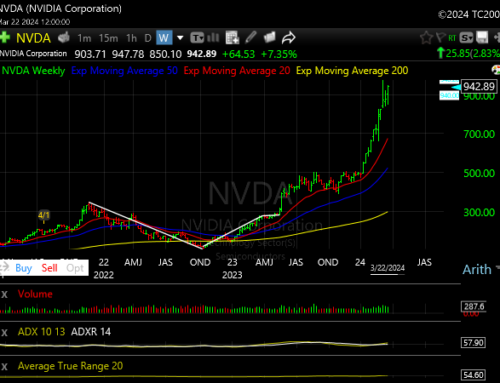 Financial market pundits are often obsessed with picking tops and bottoms.
Financial market pundits are often obsessed with picking tops and bottoms.
Admittedly, I’ve mainly been obsessed with identifying major market tops.
Why?
Because if for some reason you have to sell out your positions in the market, you don’t want to do so at the bottom.
However, I don’t look to identify tops and bottoms so that I know when to sell positions and go 100% to cash, or when to use margin because a new bull market has arrived.
It isn’t smart to move in and out of core investment holdings. Nobody ever times the markets perfectly.
With this in mind, the obsession is mainly about determining the best time to put on a hedge.
The timing is virtually impossible to nail down for every market top and bottom, and that is not what I wanted to focus on with this post.
Instead, I just wanted to touch base on how to hedge a stock market portfolio.
Most investors simply ride the markets with a portfolio comprised of stocks, bonds and mutual funds.
Most people who try to actively manage their portfolios are very bad at timing the market. As a result, they often get in at the highs and out at the lows.
What they should do is simply stay invested, but have a strategy to hedge against a major decline when the probabilities of such a decline are high.
How to hedge
What you don’t want to do is run out and sell all your stocks.
Instead, use the futures markets to provide you with a hedge in case the market declines. To learn more about futures trading, read this article.
To keep this simple, we will focus on S&P 500 futures contracts and assume your portfolio tracks closely with that index.
There are two different contracts to use, depending upon the size of your portfolio… the E-Mini and the Micro E-Mini.
The value of one E-Mini contract is $50 x the value of the index. A one-point move in the index is worth $50.
The value of one Micro contract is $5 x the value of the index. Therefore, a one-point move in the index is worth $5.
The close on Friday May 24 was 5,321.50. Thus, the value of the E-Mini contract is $266,075.
The value of the Micro contract is then $26,607.5.
If you have a portfolio of about $250,000 to $300,000, then shorting one E-Mini contract would be an effective hedge against a major market decline.
If your portfolio is between $300,000 and $500,000, then you will want to use a mix of E-Mini and Micro contracts to match the value of your portfolio as closely as possible.
This is why futures markets were created. Initially, most contracts involved agricultural markets such as corn and soybeans.
The futures markets allowed farmers to hedge their crops when became time to bring the crop to market.
Farmers will put on a short position in futures in case prices fall as they harvest their crop and begin to sell it on the market.
The short position then helps offset the market decline.
This same general principal holds for the stock market.
One problem with hedging
One problem with hedging a stock market portfolio is that there is a cost. If you short the market, you will lose money on the hedge if the market continues to the upside.
While you are making money with your portfolio, your overall return is less than what it could be.
One money manager I know as clients who always want to be long in the stock market.
He manages their money with long positions in E-Mini S&P 500 futures, and then hedges the portfolio with a long term put option.
The issue here is that the put option may expire worthless, and therefore, money is lost. The result is that the overall performance of the portfolio is less than what it could be.
However, this manager has a futures trading program that trades a very diverse portfolio of futures markets.
That program helps to pay for the cost of the put option some of the time, and can even provide a performance boost to the portfolio if markets are favorable. Of course, that also depends on if that strategy is producing profits.
I’ll be discussing diversification with futures markets down the road.
Final Thoughts
You can make investing in the market as simple as you want, or as complex as you want.
However, there can definitely be a need for hedging your portfolio. One really never knows when they will be forced to liquidate.
With this in mind, it pays to learn all you can about the various tools available to you to provide yourself with a soft landing in the case of a significant market decline.





